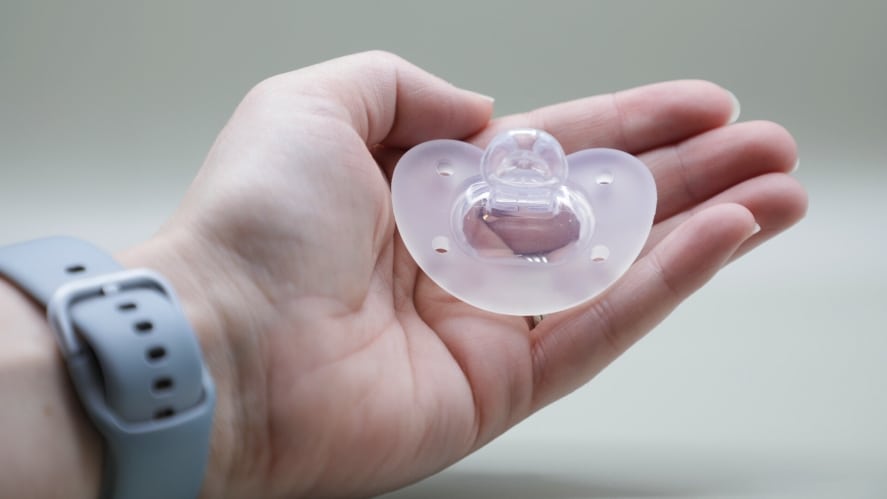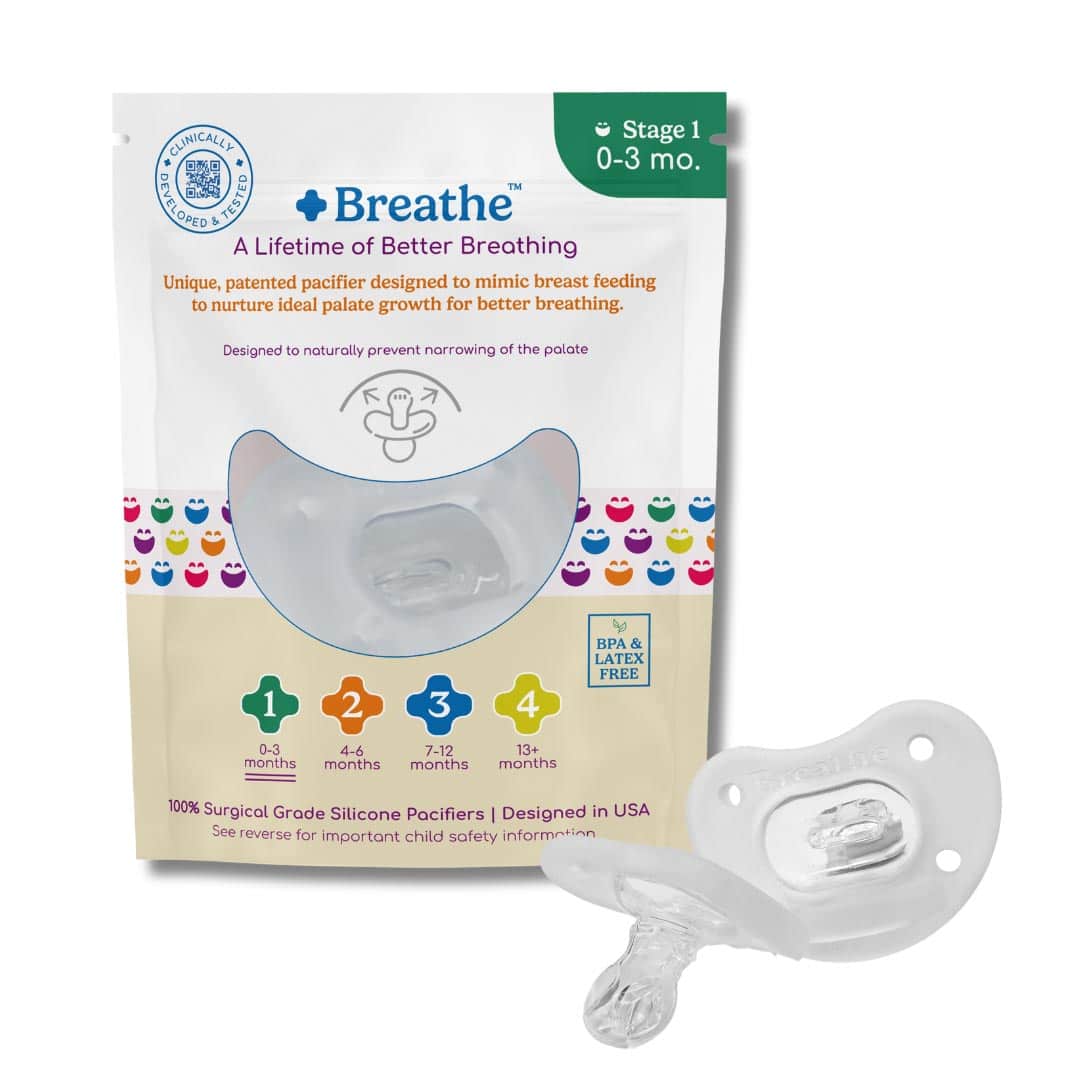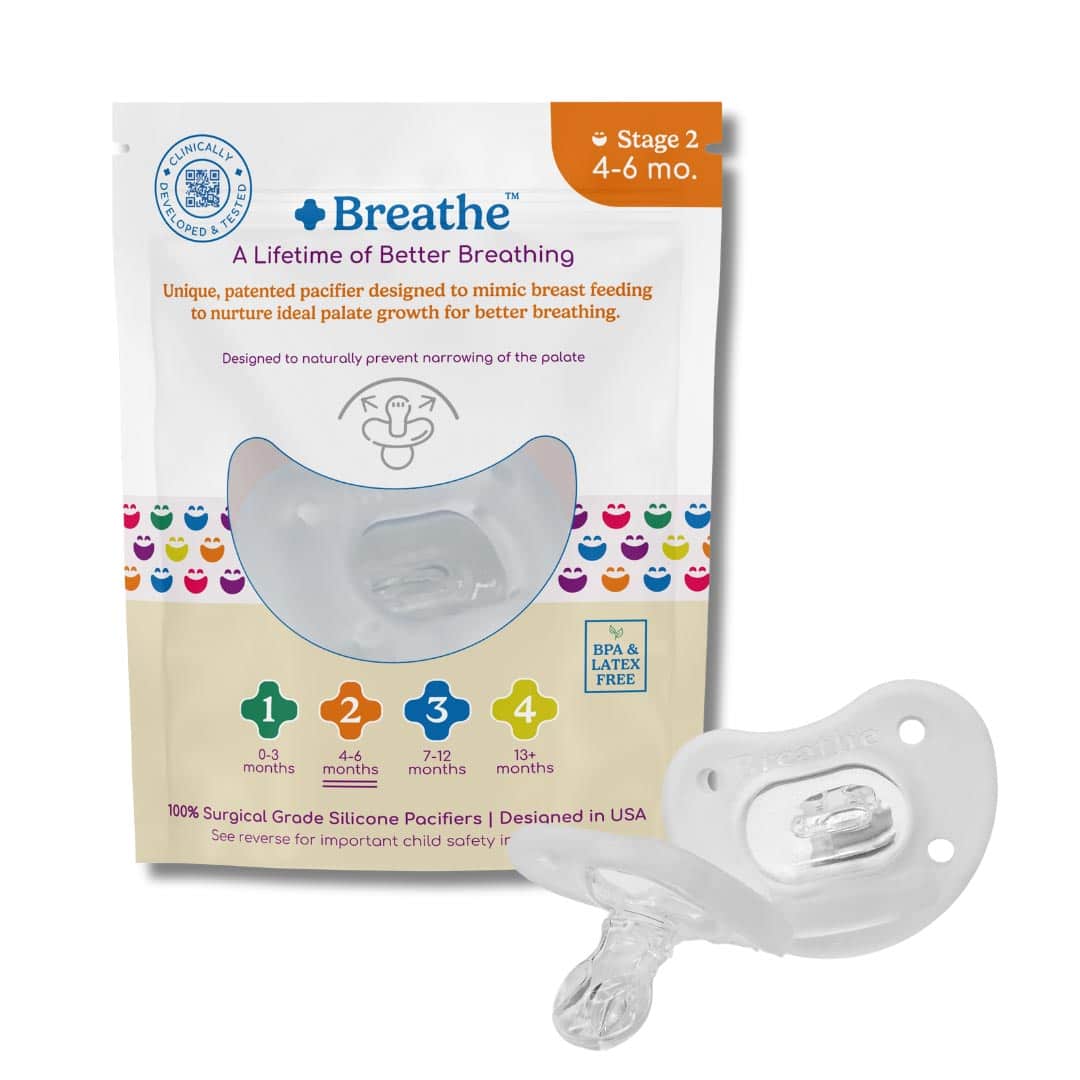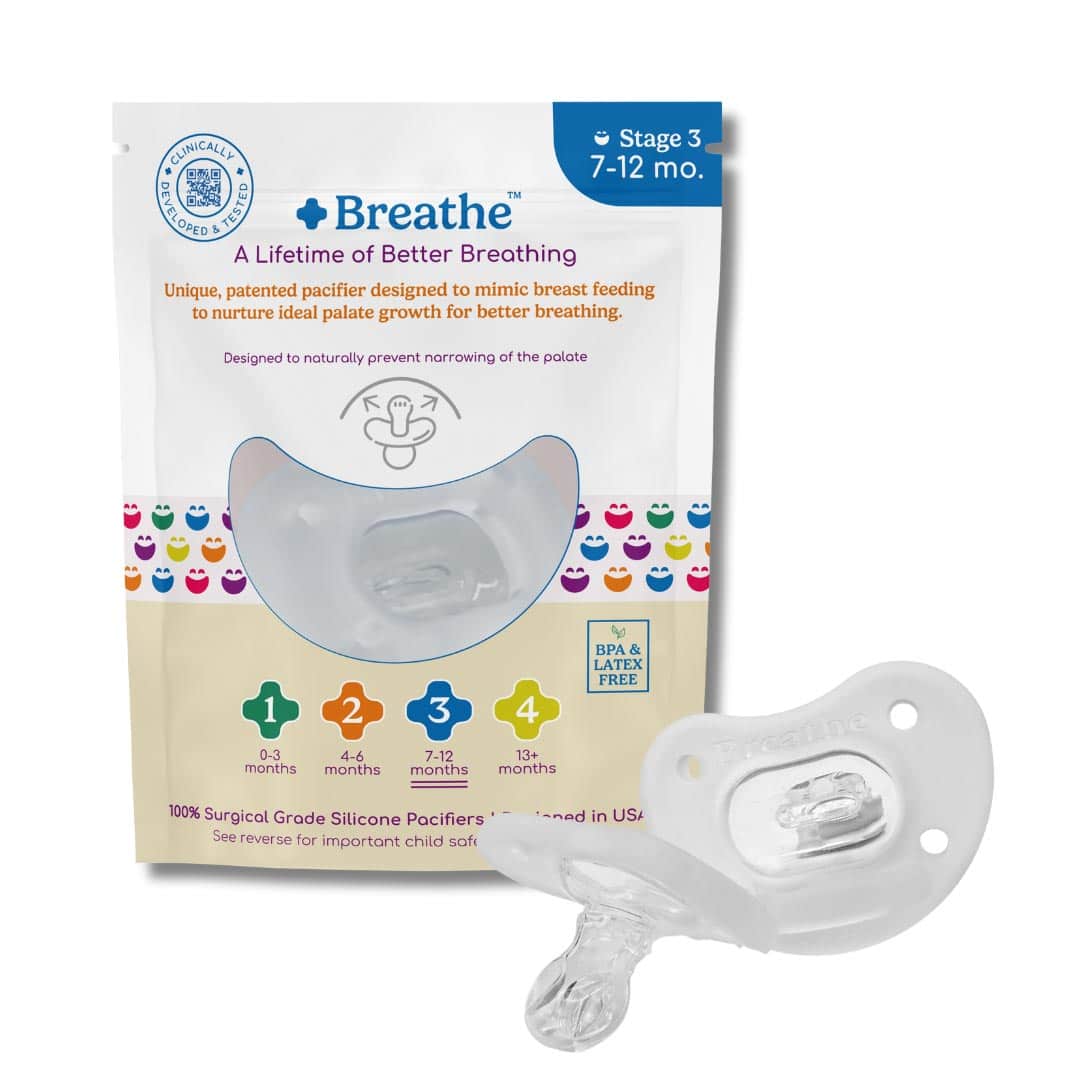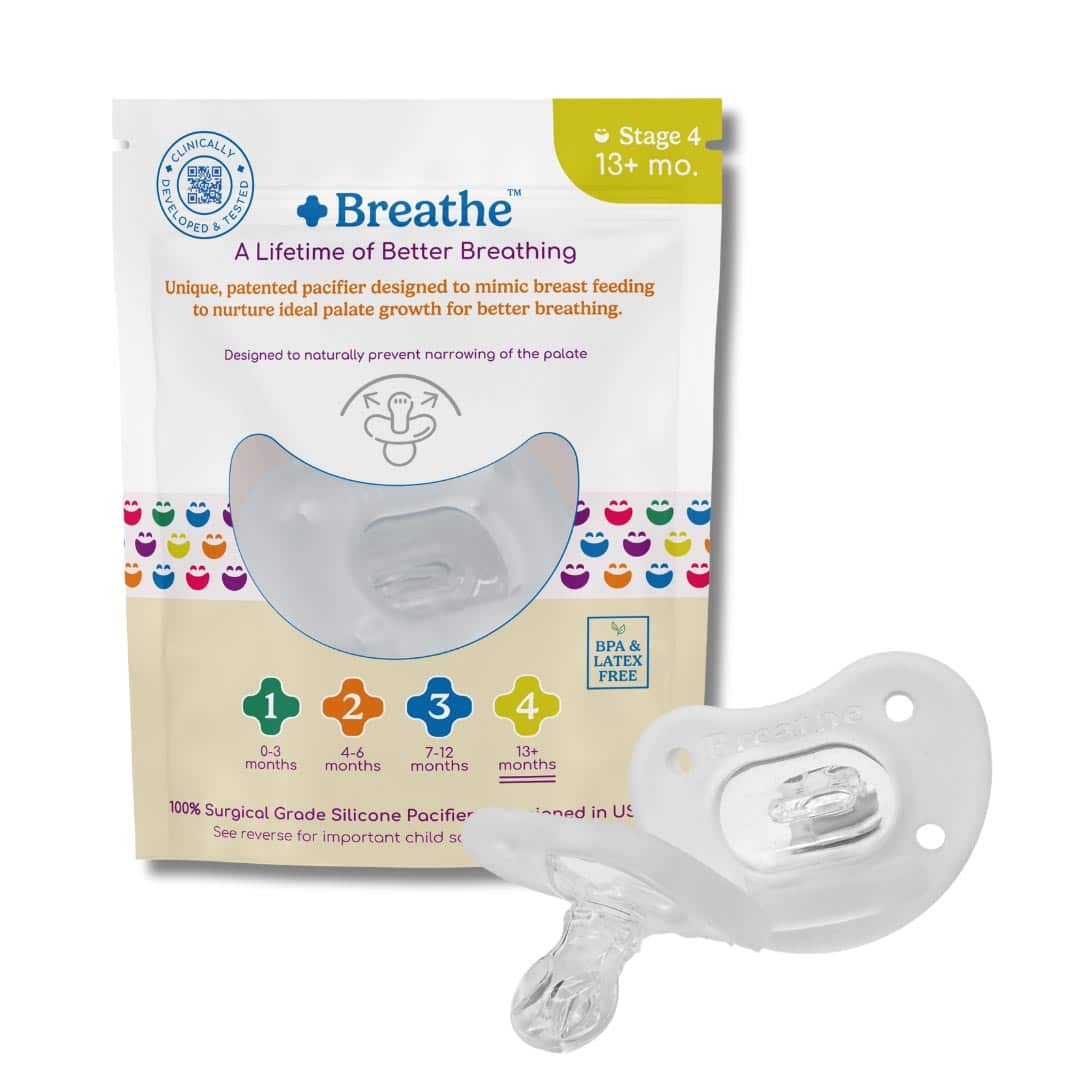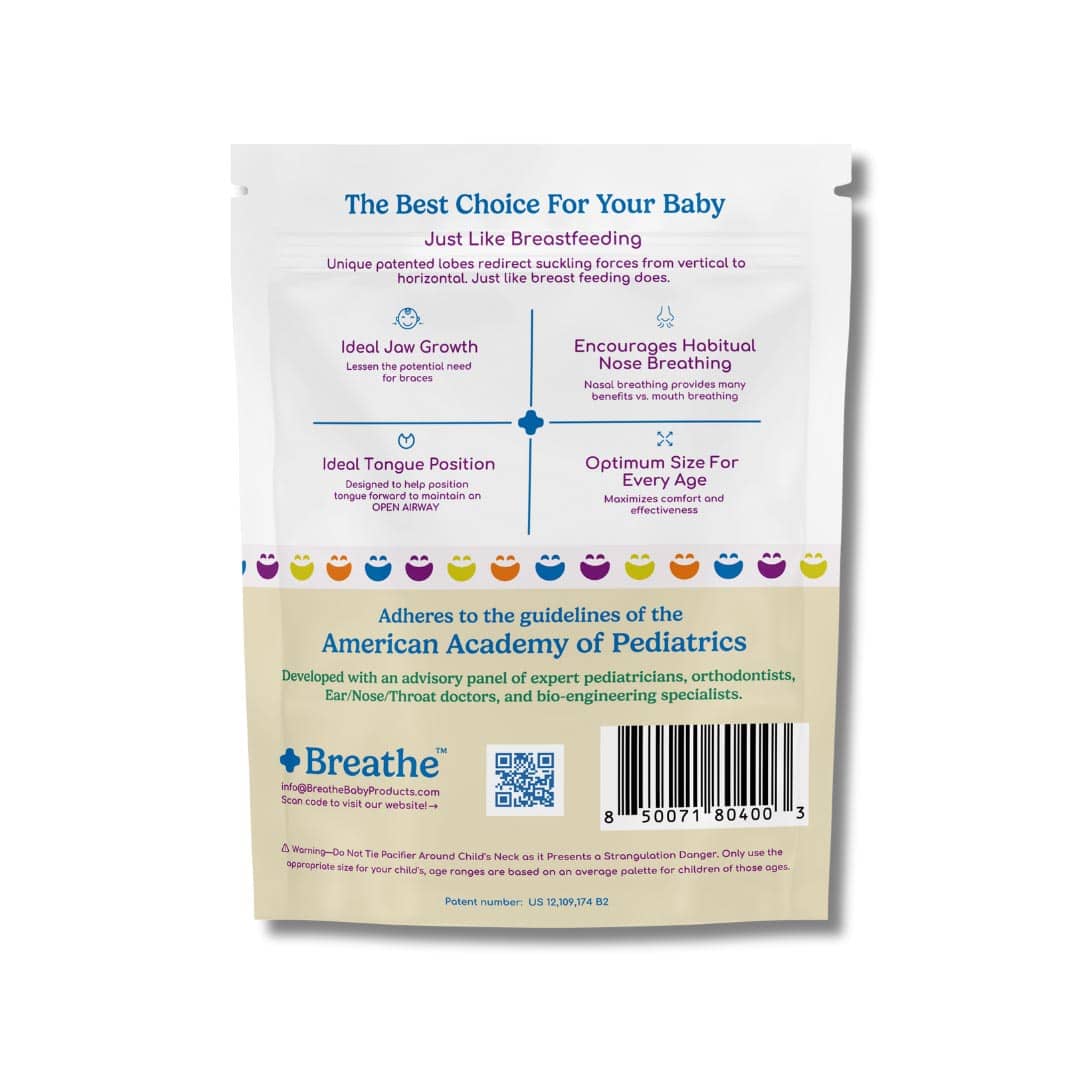Breathe Pacifiers
The only pacifier available that features the unique patented design to mimic how breastfeeding encourages natural, ideal oral and facial development.
Study: Breastfeeding’s Relation to Facial Profile, Occlusion, and Spacing
Key Points
- Breastfeeding is not mere nutrition and can be considered as a natural orthopedic device for the harmonious development of the face.
- The upward and outward forces exerted by the tongue during suckling affect the growth of a child’s upper and lower jaws.
- The importance of increased breastfeeding duration in preventing the development of misaligned teeth and jaws, enhancing the growth of the jaw, and establishing proper alignment of the teeth by stimulating the facial muscles during suckling have been well documented in the literature.
- BPA and latex Free
- Dishwasher Safe
- Adheres to the guidelines of the American Academy of Pediatrics
- Developed with an advisory panel of expert pediatricians, orthodontists, Ear/Nose/Throat doctors, and bio-engineering specialists
$8.99
Select Your Baby’s Stage:
It’s all about supporting your little one’s future health, right from the start!
Most babies enjoy being soothed with a pacifier, so why not provide your baby with the only pacifier designed to promote optimum palate development and better breathing for a lifetime?
Ideal Jaw Growth
Lessen the potential need for braces
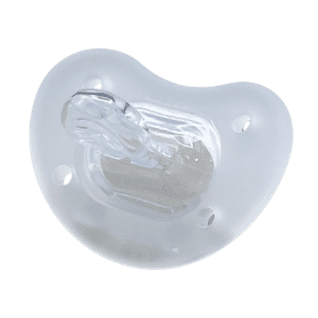
Study: Breastfeeding and Jaw Development
Key Points
- You may be able to prevent the need for orthodontics by breastfeeding.
- Somewhere between 25-50% of children require braces or other orthodontic treatment during childhood.
- Research in the past few decades suggests that breastfeeding can promote proper jaw development and orthodontic growth. In other words, breastfeeding can help your child’s teeth grow in straight, without crowding.
- During infancy, a baby’s soft palate is soft and “wax-like.”
- Breastfeeding supports good jaw development because of the unique way it encourages the tongue to press against the soft palate of the mouth.
- Bottle feeding does not cause the same action, which is why children who are exclusively bottle-fed have a much higher risk of orthodontic issues.
Encourages Habitual
Nose Breathing
Unique patented lobes redirect suckling forces from vertical to horizontal. Just like breast feeding does.
Ideal Tongue Position
Designed to help position tongue forward to maintain an OPEN AIRWAY
Study: Breastfeeding and Jaw Development
Key Points
- Breastfeeding’s impact on jaw growth is also good for the development of a baby’s airway. This may help prevent problems with sleep-disordered breathing, such as sleep apnea.
- During infancy, a baby’s soft palate is soft and “wax-like.”
- Breastfeeding supports good jaw development because of the unique way it encourages the tongue to press against the soft palate of the mouth.
Study: Correlation of Palatal Index with Pharyngeal Airway
Key Points
- The objective of this study was to evaluate the relationship between palate shape and airway problems.
- It was concluded that a high palate is correlated to reduced upper and lower airways.
Optimum Size For Every Age
The right size is important as baby’s mouth grows to support ideal palate shape and oral development
Study: Conformity between Pacifier Design and Palate Shape
Key Points
- A prerequisite for an anatomically correct pacifier is an age-appropriate size, which corresponds to the natural growth process of the child’s palate.
- The need for an age-appropriate pacifier dimension is further emphasized by the relationship between palate shape and sudden unexpected death in infancy (SUID). A recent computed tomography and autopsy study of children, who died of SUID at an average age of five months, showed that the SUID group had significantly narrower palates than the control group.
Study: Functional Comparison of Pacifiers
Key Points
- Pacifiers have been shown to affect growth of the jaw.
- The forces of Non-Nutritive Sucking have a direct effect on the structures of the palate and can contribute to high arch palates, dental crossbites, compromised airways, facial asymmetries, and changes in the form and dimension of the palate.
- The soft bones of the palate are malleable. Palatal growth responds to forces of the tongue, intraoral pressure, position of bulb placement in the oral cavity, composition and design characteristics of the pacifier bulb, and the design of the pacifier shield.
See Patent Information
Patents
The granting of multiple United States and International patents underscores how unique Breathe pacifiers and bottle nipples are. No other pacifier or bottle nipple is designed to offer all the vitally important benefits Breathe offers your baby. Now that you can provide your baby with essential physical development benefits previously only available by breast feeding, why use any other pacifier or bottle nipple? Optimum sizes for every stage of growth.
U.S. Patent No. 12,109,174 B2 Date of Patent: Oct. 8, 2024
U.S. Patent No. 10,555,876 B1 Date of Patent: Feb. 11, 2020

Why It Matters
Healthy Breathing, Happier Kids
At Breathe Baby Products we are passionate about developing products to support optimum oral and facial development for a lifetime of better health.
Study: High/Narrow Palates a New Risk Marker
Key Points
- This study suggests that a high proportion of the children deceased from SUDI (Sudden Unexpected Death in Infancy) had a facial structure that seemed to be different. Specifically, a hard palate that was significantly higher and narrower than in the living children in the study.
- High/narrow palates could be a sign of OSAs and a narrow structure of the facial upper airways and thus a supplementary risk factor for SUDI.
- A more thorough screening for craniofacial growth abnormalities may help to determine their possible involvement in breathing disorders during sleep and avoid premature deaths in very young children.
